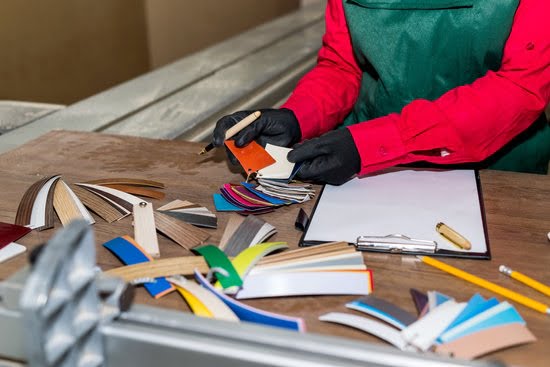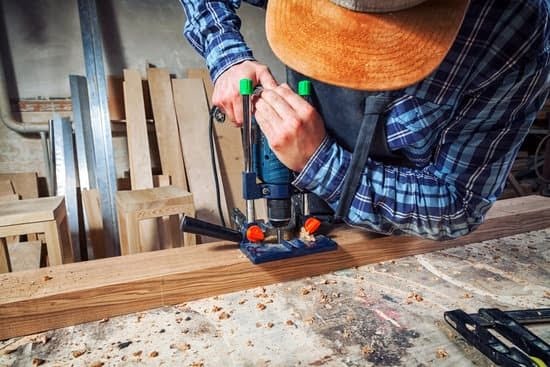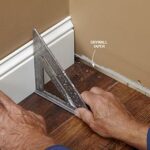Are you looking to sell or purchase used woodworking equipment? If so, you may be wondering how to price used woodworking equipment accurately. Determining the value of used woodworking equipment requires careful consideration of several factors and an understanding of the current market trends. In this article, we will discuss the important aspects to consider when pricing used woodworking equipment and provide tips for effectively marketing and selling it.
When pricing used woodworking equipment, there are several factors that need to be taken into account to ensure a fair price. Factors such as the current market value, the condition of the equipment, age, depreciation, and any added features or accessories can all play a role in determining the final price. By understanding these key factors and conducting thorough research, you can confidently price your used woodworking equipment.
In the following sections, we will explore in detail the various factors involved in pricing used woodworking equipment. From researching the current market value to evaluating its condition and negotiating the final price with potential buyers, we will provide valuable insights on how to accurately determine the value of your used woodworking equipment. Whether you’re looking to sell or purchase used woodworking equipment, this guide will help you navigate through the process with confidence.
Factors to Consider When Pricing Used Woodworking Equipment
When it comes to pricing used woodworking equipment, there are several factors that need to be carefully considered in order to determine a fair and competitive price. Understanding the various elements that contribute to the value of woodworking equipment is essential for sellers looking to attract potential buyers and secure a successful sale.
Condition of the Equipment
One of the most important factors to consider when pricing used woodworking equipment is its overall condition. Potential buyers will be looking for equipment that is in good working order and has been well-maintained. Any signs of wear and tear, damage, or malfunctions can greatly impact the value of the equipment. It is important for sellers to thoroughly inspect their woodworking equipment and accurately assess its condition before setting a price.
Age and Depreciation
The age of woodworking equipment is another crucial factor in determining its resale value. Like any other machinery or tools, woodworking equipment depreciates over time. The older the equipment, the lower its market value is likely to be. Sellers should take into account the age of their equipment and consider how depreciation may affect its price when determining a fair asking price.
Added Features or Accessories
Woodworking equipment that comes with added features or accessories can often command a higher price on the used market. If the equipment includes attachments, upgrades, or additional components that enhance its functionality or performance, sellers may be able to adjust their asking price accordingly. Including information about any added features or accessories when marketing the woodworking equipment can help justify a higher asking price.
Considering these key factors along with thorough research and proper negotiation strategies can help sellers effectively price their used woodworking equipment and optimize their chances of making a successful sale. By carefully evaluating these elements, sellers can ensure they are presenting their woodworking equipment at a fair and competitive price point while also maximizing their potential for securing interested buyers.
Researching the Current Market Value of Woodworking Equipment
Determining the current market value of used woodworking equipment is a crucial step in pricing it effectively for sale. There are several methods that can be used to research the current market value of woodworking equipment. One of the most popular approaches is to check online listings and auction sites to see what similar items are currently being sold for. This can give you a good sense of the price range for your equipment.
Another method is to reach out to woodworking equipment dealers and resellers to get quotes on how much they would pay for your used equipment. This can provide valuable insight into the fair market value of your items. Additionally, industry publications and trade associations often publish data on average prices for different types of woodworking equipment, which can be useful in determining a reasonable selling price.
It’s important to remember that market values can fluctuate, so it’s essential to gather this data close to when you intend to sell your woodworking equipment. By staying informed about the current market trends, you can ensure that you are pricing your items competitively and attracting potential buyers.
| Method | Advantages |
|---|---|
| Checking online listings and auction sites | Provides real-time price range information |
| Getting quotes from dealers and resellers | Offers insights into fair market value |
| Industry publications and trade associations | Publishes average prices for different types of woodworking equipment |
Evaluating the Condition of the Equipment
When it comes to pricing used woodworking equipment, one of the most important factors to consider is the condition of the machinery. The condition of the equipment will greatly impact its market value and ultimately, how much you can sell it for. Before listing your used woodworking equipment for sale, it’s crucial to thoroughly evaluate its condition to determine a fair and competitive price.
First and foremost, examine the overall physical condition of the woodworking equipment. Look for any signs of wear and tear, damage, or corrosion. Ensure that all parts and components are in working order, without any visible defects or issues. Additionally, check for any missing pieces or broken elements that could affect the functionality of the equipment.
After assessing the physical condition of the machinery, it’s also essential to test its performance. Run some wood through saws, drills, lathes, and other tools to ensure that they operate smoothly and effectively. Pay attention to any unusual noises or vibrations that could indicate internal problems. Take note of any maintenance or repairs that may be needed in order to bring the equipment up to optimal working condition.
Finally, document any cosmetic imperfections or damages that do not affect functionality but may still impact the overall appeal of the woodworking equipment. This comprehensive evaluation will provide you with a clear understanding of the equipment’s condition and enable you to set a realistic price based on its current state.
| Evaluation Criteria | Considerations |
|---|---|
| Physical Condition | Check for wear and tear, damage, and missing parts. |
| Performance Testing | Test tool performance; listen for unusual noises or vibrations. |
| Cosmetic Imperfections | Note any surface flaws that may affect aesthetic appeal. |
By carefully evaluating every aspect of your used woodworking equipment’s condition, you’ll be better equipped to effectively price it in line with its market value.
Determining the Age and Depreciation of the Equipment
When pricing used woodworking equipment, it is crucial to consider the age and depreciation of the equipment. Understanding how these factors impact the value of the machinery can help sellers set a competitive and fair price to attract potential buyers.
Evaluating the Age of the Equipment
One of the initial steps in determining the value of used woodworking equipment is to assess its age. Older equipment typically experiences more wear and tear, resulting in decreased functionality and performance. It’s important to research the manufacturer’s specifications and guidelines for the expected lifespan of the machinery to gauge its current condition accurately.
Understanding Depreciation
Depreciation refers to the decrease in value over time due to factors such as wear and tear, technological advancements, and market demand. By understanding how depreciation impacts woodworking equipment, sellers can adjust their pricing strategy accordingly. Factors such as maintenance records, usage frequency, and overall care play a significant role in determining depreciation.
Utilizing Depreciation Calculations
Sellers can utilize various methods for calculating depreciation, including straight-line depreciation or using industry-standard depreciation tables. These calculations can provide a more objective approach to pricing used woodworking equipment based on its age and expected remaining lifespan. Additionally, considering any recent repairs or upgrades can also contribute to adjusting the price based on depreciation.
By thoroughly evaluating the age and depreciation of woodworking equipment, sellers can make informed decisions when setting prices that accurately reflect the value of their machinery in today’s market. This comprehensive approach ensures transparency with potential buyers while maximizing returns on their investment.
Adjusting the Price Based on Any Added Features or Accessories
When it comes to pricing used woodworking equipment, it’s important to consider any added features or accessories that may affect the overall value. These extras can range from upgraded blades and fences to dust collection systems and digital readouts. Here are some factors to keep in mind when adjusting the price based on any added features or accessories:
Factors to consider:
1. Quality of the added features: Are the extra components high-quality and in good working condition? If so, this could add significant value to the equipment.
2. Relevance to potential buyers: Consider whether the added features are desirable or necessary for potential buyers. For example, a dust collection system might be more valuable than an older model fence.
3. Cost of installation or replacement: If the added features were expensive to install or would be costly for a buyer to replace, this should be reflected in the price.
Adjusting the price based on these factors is crucial in accurately reflecting the value of the used woodworking equipment. To help determine how much these added features are worth and how they should impact your pricing strategy, you can use a combination of research and common sense judgment.
Before listing your used woodworking equipment for sale, create a detailed list of all the added features and accessories it includes. This will help potential buyers understand what sets your equipment apart from others on the market.
Additionally, highlight these extras in your marketing materials and use them as selling points when negotiating with potential buyers. By accurately valuing and promoting any added features or accessories, you can maximize the selling price of your used woodworking equipment while providing excellent value for interested buyers.
Negotiating the Final Price With Potential Buyers
When it comes to selling used woodworking equipment, negotiating the final price with potential buyers can be a critical step in closing the deal. Here are some tips for effectively navigating this process:
1. Know your bottom line: Before entering into negotiations with potential buyers, determine the lowest price you are willing to accept for your used woodworking equipment. Consider factors such as the cost of acquiring new equipment, any outstanding maintenance or repair costs, and the current market value of similar items.
2. Highlight the value: During negotiations, it’s important to highlight the value of the equipment you are selling. Provide potential buyers with information on any unique features, accessories, or added bonuses that come with the equipment. This will help justify your asking price and demonstrate why your equipment is worth the investment.
3. Be open to compromise: Negotiations often involve give-and-take from both parties involved. Be prepared to compromise on certain aspects of the sale, such as offering a discount if the buyer is purchasing multiple items or covering some of the shipping costs. Flexibility can go a long way in reaching a mutually beneficial agreement.
Ultimately, negotiating the final price with potential buyers requires a combination of knowledge about the market value of used woodworking equipment and strong communication skills. By being well-informed about your bottom line, highlighting the value of your equipment, and being open to compromise, you can increase your chances of successfully closing a sale at a fair price.
Tips for Effectively Marketing and Selling Used Woodworking Equipment
When it comes to effectively marketing and selling used woodworking equipment, there are several tips that can help you maximize your chances of a successful sale. One of the most important factors to consider is the presentation of the equipment. Take high-quality photos from different angles to showcase the condition and features of the woodworking equipment. Be sure to include close-ups of any special accessories or parts that add value to the machinery.
In addition, provide detailed descriptions of the equipment, including its specifications, dimensions, and any additional features or accessories. Potential buyers will want to know exactly what they are getting, so be transparent about the condition and any potential wear and tear.
Furthermore, tapping into online platforms such as social media marketplaces or dedicated woodworking equipment forums can help you reach a wider audience of potential buyers. Utilize these platforms to promote your woodworking equipment listing and engage with interested parties. Always be responsive to inquiries and willing to provide additional information or even virtual demonstrations if needed.
By effectively marketing your used woodworking equipment, you increase your chances of finding interested buyers who recognize the value in what you have to offer. Following these tips can make the selling process smoother, leading to a successful transaction for both you as the seller and the buyer.
Conclusion
In conclusion, pricing used woodworking equipment can be a complex process that requires careful consideration of various factors. By understanding the value of the equipment and taking into account factors such as current market value, condition, age, and any added features or accessories, sellers can determine a fair and competitive price for their used woodworking equipment. Researching the market and negotiating with potential buyers are also important steps in ensuring a successful sale.
When determining the price of used woodworking equipment, it is essential to conduct thorough research on the current market value. This will help sellers understand what similar equipment is selling for and allow them to price their items competitively. Additionally, evaluating the condition of the equipment and considering its age and depreciation will further inform the pricing decision.
Furthermore, being transparent about the condition and any added features of the woodworking equipment can help in effectively marketing and selling it. By providing detailed information to potential buyers, sellers can build trust and confidence in the product they are offering. With these considerations in mind, sellers can navigate the process of pricing used woodworking equipment with confidence and ultimately achieve a successful sale.
Frequently Asked Questions
What Is the Most Used Tool in a Wood Shop?
The most used tool in a wood shop is often the table saw. It is essential for cutting large pieces of wood to size and can be used for a variety of different cuts, making it a versatile tool that woodworkers rely on regularly.
What Is the Most Popular Machine in a Woodworking Shop?
The most popular machine in a woodworking shop is typically the jointer. This machine is used to create a flat edge on a piece of wood, which is necessary for joining two pieces together. It helps ensure that the pieces fit together perfectly, making it an indispensable tool for woodworking projects.
What Are Boring Tools in Woodworking?
Boring tools in woodworking are used to create holes in wood. This can include tools like drills, braces, or augers, which are essential for many woodworking projects. These tools allow woodworkers to create precise holes for dowels, screws, or other joinery methods, making them an important part of any woodworking toolkit.

Hi everyone! I’m a woodworker and blogger, and this is my woodworking blog. In my blog, I share tips and tricks for woodworkers of all skill levels, as well as project ideas that you can try yourself.





